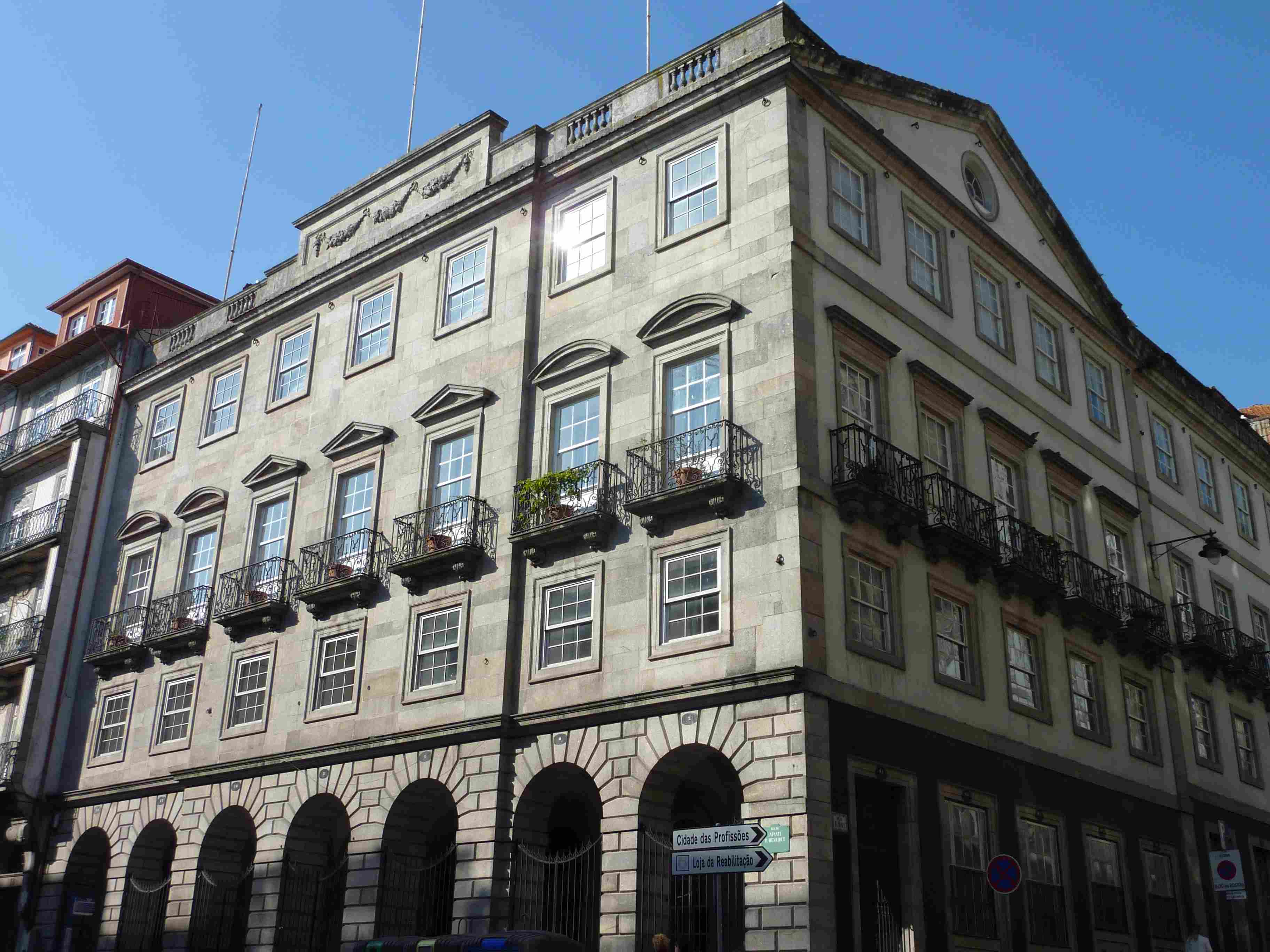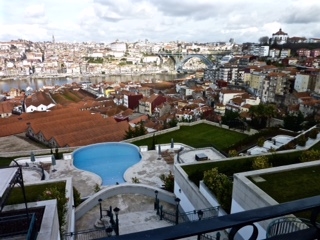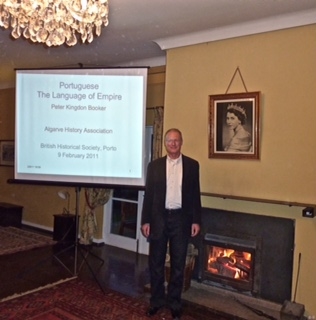Lynne Booker
... ´We can´t get no port wine anywhere else ...´ . Long before the ´coca-colonisation´of the world, a few British families had located and settled in a number of the best grape-growing areas in and around Western Europe and the Mediterranean. The British love of fortified wines had encouraged wine entrepreneurs to set up businesses in the eponymous Madeira, Sicily (Marsala), Jerez (Sherry), and last but by no means least Porto (port) a city which has been dubbed both ´the cradle of Portuguese liberties´and ´Invicta´.
The shippers, their families and employees together brought a form of British culture which has lasted to this day, particularly in Porto where the last remaining ´Factory House´ in the world is still a focus for the port wine trade companies and is officially called The British Association. ´The Factory House´is owned exclusively by the British shippers (nowadays three groups of companies). At the nearby Oporto Cricket and Lawn Tennis Club founded by the British community in Porto amongst whom were some wine shippers, you might even be lucky enough to see the MCC on one of their occasional tours. Factory was the collective name for a guild or association of merchants, usually in a foreign country, and such single nationality factories existed in all parts of the world. For example, in Lisbon there existed English, French and Dutch factories . ´Factory House´ is the name given to the actual building in Porto used by the merchants as their headquarters.
´one of the more romantic phenomena in the history of settlers abroad ´
... was how Rose Macaulay described the rich history of the British wine-shipping colony of Porto. No doubt she was referring to the spectacular scenery of the Upper Douro and the use of the picturesque barcos rabelos which used to bring the pipes of port to the lodges at Vila Nova de Gaia as much as to the rich hue and heady bouquet of the port wine itself.

´The Portuguese and the English have always been the best of friends´
As far back as the 13th century, British traders in Viana do Castelo traded in a wine called ´red portugal´. It was however only in 1667 when Charles II of England banned the import of French wine (in retaliation to Louis XIV´s ban on the sale of English cloth in France) that merchants shipped as much ´red portugal´as they could. The treaty of 1654 between the England of Oliver Cromwell and Dom João IV´s Portugal had already given enormous commercial privileges to the English and the ´factory´of English and Scots traders in Porto grew into a powerful group of wine merchants. The British colony had its own consul and its own chaplain at least during the intervals when he was not chased out of Portugal by the Inquisition. Then in 1703 the Methuen Treaty between England and Portugal secured even greater profits for the shippers of Porto by reducing the import duty on Portuguese wines into England. By the 18th century, port was considered quite indispensable among ´proper´Englishmen and Dr Samuel Johnson voiced a common opinion that ´claret is the liquor for boys, port for men.´
World´s first demarcated wine region
As port supplies began to lag behind demand, growers resorted to adulterating the port with Spanish sweet wine, heavy doses of brandy and even added a brilliant red colour with elderberry juice. The British shippers refused in 1755 to buy the wine unless the adulteration stopped, thus provoking a crisis. The King´s chief minister, Sebastião de Carvalho e Melo (later the Marquês de Pombal) intervened to form a monopoly which had control of port wine standards and prices (A Companhia Velha - the ´Old Company´). One of the first acts of this company was to demarcate the Alto Douro as the only region where port wine could legally be made and to nominate Vila Nova de Gaia as the only place where port wine could legally be stored, aged and bottled prior to shipment. The British shippers were outraged at these restrictions, but despite their demands on the British Government, the British authorities showed no interest in their plight. Pombal brusquely told the shippers that if they could no longer make a profit they should leave and they reluctantly came to terms with the ´Old Company´ conditions. John Croft remarked in 1788, ´an Englishman of any descent, condition or circumstances cannot dispense with it (port wine) after his good dinner, in the same manner as he uses a piece of Cheshire cheese for pretended digestion-sake´. The improved port wines regained favour in England and the port wine business began to flourish again. It found a new market in Britain among the working classes who mixed it with lemonade and drank it from mugs. When port came back onto the market after World War 2, it faced competition in Britain from sherry and cheap ´British wines´(imported wine and grape juice). At this point many of the old Porto shipping firms sold up, amalgamated or started heavy advertising campaigns under their own names. Today´s port market is no longer dominated by the British; it is now France which imports most port (probably due to the large numbers of Portuguese who live there), followed closely by the United States. Britain comes in at number 4, although it is first in terms of imports of higher quality ports. Trends in port drinking are also changing. The market in white port as an aperitif is growing and many companies are now marketing port as a sophisticated mixer drink and one company has even introduced a pink port.
The Factory House

There is no evidence of a factory house in Porto before 1786 when Consul Whitehead put forward his designs. He planned a three storey granite building measuring 70 feet by 90 feet for a site at the corner of what was then the Rua Nova dos Inglezes (now Rua do Infante Dom Henrique) and the Rua de São João. The building was completed in 1790 and has an arcaded front, a spacious vestibule, a massive stone stairway, a library, sitting-rooms, billiard and smoking rooms, a large dining room, a dessert room and a ballroom - a worthy setting for business and pleasure. The ballroom was used for protestant church services before the Portuguese authorities permitted the building of an Anglican church in the city. The members of the British Factory in Porto used the House from 1790 until 1807 and many members left the country at that time in the face of the French Invasions. By the time they returned in 1810/11 the factory system had been abolished. Since 1811 the Factory House has been wholly owned by the members who are the British shipping companies (it is not owned by individuals). The Association became legal owners of the Factory House by Royal Decree in December 1850 (before that date the Association had paid an annual leasehold rent).
The Factory House has been the focus of numerous entertainments and visits by royalty including Queen Elizabeth II in 1957 and Princess Anne and Captain Phillips in 1979. In 1987 the Prince and Princess of Wales attended a reception as part of the celebrations to mark the 6th centenary of the historic marriage in Porto Cathedral of Dom João I to Philippa of Lancaster. Each of these visits is commemorated in the Factory House on illuminated parchment. A continuing tradition at the Factory House is the Wednesday lunch, a magnificent affair which has its roots in the days when Wednesday was the day that senior company representatives had to be in town. Although the member company representatives are all British, senior Portuguese employees of British Shippers also enjoy luncheon rights. The Factory House is a magnificent memorial to the British presence in the port wine trade, to British/Portuguese relations and to British culture which is also exemplified by the Oporto Cricket and Lawn Tennis Club which was founded in 1855 by the British community in Porto some of whom were port shippers.
The club merged with the Oporto British Club in 1967 and provides facilities for squash, tennis, swimming, cricket, football and hockey and the club house has an excellent restaurant, bar and snack area, eight bedrooms, a reading room and a billiard room. Although current members are predominantly British, more and more Portuguese and other nationals are joining as associate members. The club celebrates the Queen´s birthday each year and hosts visiting amateur cricket teams. The Club has reciprocal arrangements with such prestigious London clubs as the Carlton, the Oxford and Cambridge and the Army and Navy. In her book, `They Went to Portugal´, Rose Macaulay reported that many French and German visitors were of the opinion that there was too much British influence in this oldest of Portuguese cities. Porto was ´une ville anglo-portugaise´with its fine British houses, its British shops, British club, Anglican church, London newspapers, Factory House, cricket ground, wine lodges in Vila Nova de Gaia, and quintas in the upper Douro valley. British shippers and the age old British taste for port wine have earned a place in the prosperity of Porto life in spite of invasions, civil wars, political tensions, economic depressions, criticisms and disagreements. The special magic of port wine has kept the ´oldest allies´ together for well over six centuries. Long may this relationship last!

Styles of Port
Vintage - blended from the wine of the best vineyards in the same year and stored whilst maturirng for not less than 15 years. It must be bottled and racked within two years of harvesting. Vintage port is matured in the bottled, all others are matured in the wood.
Single Quinta - Port from a single vineyard. It can often be a vintage port.
LBV - late bottled vintage. A single year port that has been matured in wood for not less than 4 years before being bottled.
Vintage Character Port - Is similar to a fine ruby and not that of a vintage.
Crusted port - This port is a blending of wines from different years. Kept in casks for 4 years and then 3 years in the bottle prior to being sold.
Fine Old Tawny - This is pale-amber in colour . It is a blended wine from different years and its label will indicate its age as an average year of its content. It is bottled and racked for 10, 20 years or more giving a smooth silky texture and a mellow nutty flavour. Old tawnies bottled with a date are called colheitas. However no British shipper would sell this wine so as not to confuse it with vintage.
Vintage-dated Tawny - This is like a fine old tawny but also considered a vintage. It can spend 20 or 50 years in a cask.
Tawny - A port that is less sweet in flaour and composed of blending from different aged wines. It does not improve with ageing.
Fine Old Ruby - Blended from different years and kept in the cask for about 4 years before being ready to drink. These wines have a fruity-spicy flavour and are classified as inferior to Tawny.
Ruby - A fruity port that is deep red in colour. It is blended from wines of different years and take no more than 1 to 3 years to mature.
White - This is either dry or sweet. Normally chilled before serving.
This article has been prepared with the help of Ian Sinclair, sometime Treasurer of the British Association, who generously guided Peter and me in a tour of the Factory House. Thanks are also due to Pat Sinclair for inviting Peter to speak to the British Historical Society (Porto branch) and to both Ian and Pat for their hospitality.

